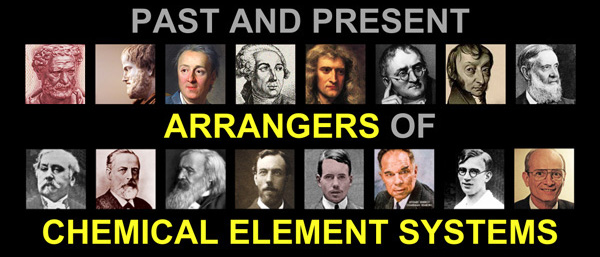Arrangers of Chemical Elements for Periodic Tables and Models

Three PowerPoints highlight an innovator-oriented history of the development of element concepts and illustrations from ancient history leading to the current operative periodic tables for study and professional use.
NGSS, and particularly Crosscutting, is particularly well related to the historic backstory, creative genius', and technology of the later builders of periodic tables.
Science: Chemistry, scientific methods, parts of atom, periodic table, etc.
Technology: Lavoisier: experimentation, lab analysis, Moseley: X-ray spectra, atomic numbers, Seaborg: element isolation, radioactivity
Engineering: sorting, arranging & designing: De Chancourtois' familiarity with geological & seismic recorder apparatus led him to a convenient helical portrayal of element arrangement, & Alexander re-integrated the f-block in the main body and established the linking of the Group 2a with Groups 3a and 3b at a common nexus
Math: determination of percentages and other measurements, numeracy in general
History: From Ancient Greeks through the European Middle Ages up to 2020
These PowerPoints are designed to provide additional aid to the teacher who wishes to help students understand the process of building knowledge to and arriving at the first and following periodic tables, the science and steps of improving the data in many ways, and the probability that the process is incomplete even now.
PowerPointSegment 1: Pre-Periodic Table Developers - Philosophy to Alchemy
PowerPointSegment 2: First Scientific Periodic Table Arrangements
PowerPointSegment 3: Modern Periodic Table Arrangements - 2D to 3D
< BACK
AlexanderDESIGN
last update 10/10/2020